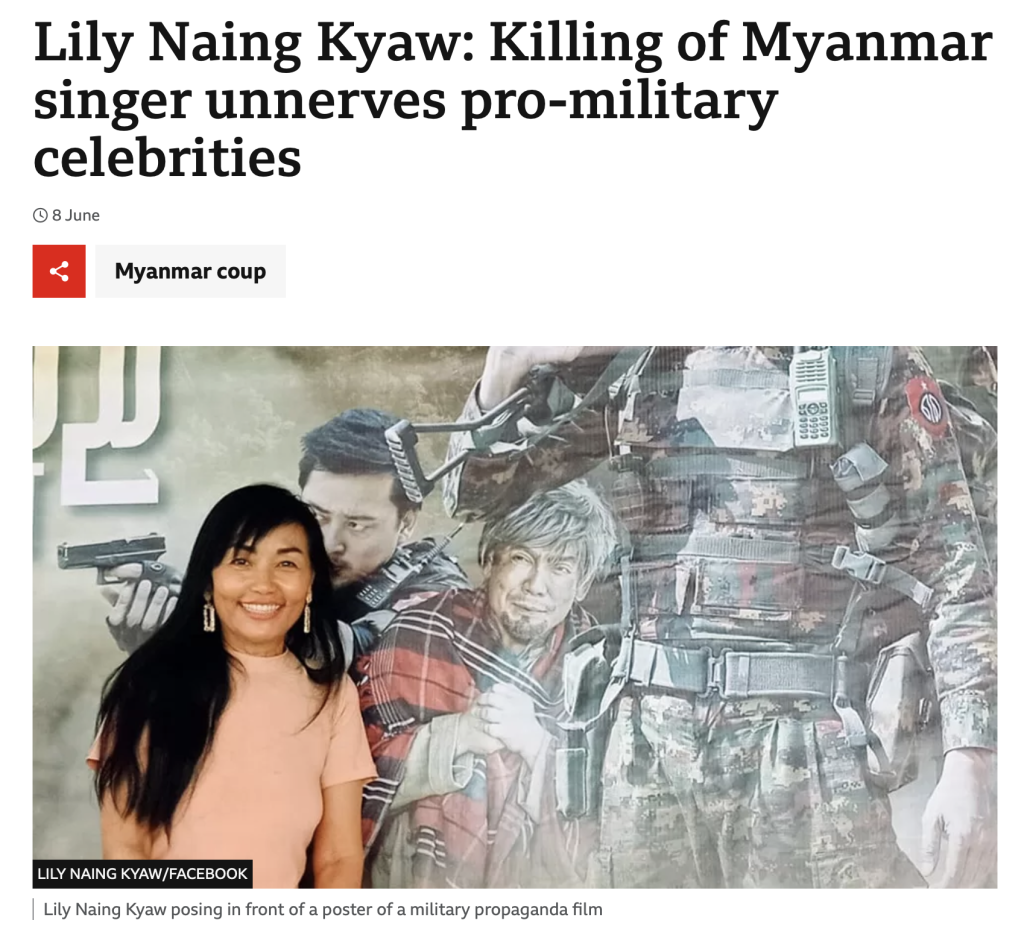All Global Research articles can be read in 51 languages by activating the Translate Website button below the author’s name.
To receive Global Research’s Daily Newsletter (selected articles), click here.
Click the share button above to email/forward this article to your friends and colleagues. Follow us on Instagram and Twitter and subscribe to our Telegram Channel. Feel free to repost and share widely Global Research articles.
***
Abstract
Muslim migrants in Japan suffer from the lack of access to burial grounds when 99.9% of the nation is cremated. Muslims are usually met with opposition from the local community where cemetery construction is planned. Using ethnographic data, the study shows how Muslim associations inadvertently fail to respect the codes of Japanese rurality when seeking a cemetery in a community to which they do not have membership, leading to a conflict. This paper closes with policy prescriptions for the central government in ensuring the cultural rights of immigrant minorities in Japan.
*
Introduction
Migration has been increasing in Japan over the last three decades (Immigration Services Agency of Japan, 2022; OECD, 2019). Given the population decline, the state frequently refers to increasing foreigners and accommodating cultural diversity as a way forward for promoting economic growth. Diversity (tayōsei) and “multicultural coexistence” (tabunka kyōsei) have now become buzzwords in many working groups discussing the shape of Japan’s future (e.g., Cabinet Office Japan, 2021). However, in a country that has historically imagined nationhood in terms of common descent (Liu-Farrer, 2020), the institutional transition into a multicultural society is slow to come by. Comparative research on multiculturalism assesses Japan’s approach to integration as “immigration without integration (Migration Integration Policy Index, 2020).” Another research institute rates Japan as trailing other countries in creating the legal frameworks academically known to accommodate the inclusion of immigrants in mainstream society (Multiculturalism Policy Index, 2020a). This paper examines the case of Muslim migrants and the hardships they face in accessing burial grounds. This shows how guaranteeing the cultural rights of immigrant minorities remains one of the primary challenges facing the Japanese government today despite its recent mantra of “multicultural co-existence.”
Muslim migrants are commonly known to suffer from exclusion and marginalization in many non-Muslim societies (Entzinger, 2006; Simon and Pala, 2010). In Japan in particular, Muslim migrants suffer from the lack of access to burial cemeteries where 99.9% of the deceased are cremated (MHLW, 2023). There are only 13 burial cemeteries accessible to Muslims nationwide, and many are forced to haul the remains across prefectures to bury the bodies in accordance with their religious teachings. Given the scarcity of burial cemeteries, especially in western Japan, Muslim associations are wanting to create more burial cemeteries, but have met with opposition from local communities. When there is opposition, the local governments are reluctant to issue permits, even when the cemetery construction plans abide by the local ordinances (jōrei) on cemetery construction and management. The shortage of burial grounds is especially an issue for Japanese Muslims who find Japan to be their home and do not have the choice of transporting the remains to their country of origin. By using ethnographic data from interviews and participant observation, this paper answers the questions of how and why Japanese Muslims face difficulties in creating burial cemeteries, and what the implications are of this empirical case to the discussions on multiculturalism in Japan.
The bulk of studies on the issue of multiculturalism focuses on how migrants face constraints in their everyday lives without paying much attention to the issues they face upon death. The same goes for studies on Muslim migrants in Japan. This study makes an empirical contribution by filling that gap in the existing literature. In addition, theoretical discussions on multiculturalism have primarily focused on identifying the legal-institutional policy arrangements that accommodate the inclusion and mainstreaming of immigrant minorities. This study advocates the importance of enforcement of such policies in promoting the well-being of immigrant minorities in host societies.
Methodology
This paper is based on ethnographic data gathered over three years. Interviews were conducted with six Muslim associations and burial cemetery owners, namely the Japan Islamic Trust, Muslim Graveyard Ibaraki Japan, Shimizu Reien Islamic Graveyard, Hiroshima Islamic Cultural Center in late 2021, and the Kyoto Koraiji International Burial Cemetery and the Oita Trappist Monastery in July 2023. Interviews were semi-structured, and conducted in Japanese and English. Interviews in Japanese were translated into English by the author for quoting purposes. Each interview, conducted over Zoom, lasted between 90 minutes to 2 hours, while some were conducted over email as an “epistolary interview” (Debenham, 2007). In addition, two interviews were conducted in mid-2022 with the local residents in Hiji who opposed the cemetery. An additional interview was conducted in July 2023 with a Buddhist monk who has been playing an active role in supporting the BMA’s campaign. Real names are used for Muslim association representatives, cemetery owners, and politicians, but pseudonyms are used when referring to the local residents.
Participant observation was conducted to study the Beppu Muslim Association (BMA) and its campaign to acquire a cemetery construction permit from Hiji Town, Oita Prefecture. From 2020 until 2022, I played a supporting role for the BMA. I assisted in activities such as gathering an online petition to request the mayor of Hiji Town to issue a permit. I also attended meetings with the Hiji Town and the local communities in Hiji and Kitsuki as an interpreter. All data were audio-recorded when permissions were given. Notes were taken and turned into field notes for coding analysis. Other primary and secondary data include raw water test results from local governments with burial cemeteries, government statistics and legal documents, newspaper articles, and academic sources on burial and cemetery issues.
Background
Muslims in Japan
Muslims residing in Japan have notably increased over the past decades, and are estimated to have reached approximately 230,000 in 2020 (Tanada 2021). This is more than a two-fold increase in ten years when the estimate was around 110,000 in 2010 (Tanada, 2013). Muslim migrants in the 1980s were recognized by the state as dekasegi workers staying only temporarily in the urban, metropolitan areas. Even though Muslims today are still concentrated in large cities, their settlement in Japanese society meant the growth of the Muslim population in areas beyond the metropolis and spread into the rural regions (Tanada, 2021, Okai 2009). In the late 1980s to early 1990s, the Japanese government suspended the visa-less entry agreements with Muslim-dominant countries such as Iran, Pakistan, and Bangladesh. This triggered a decrease in the pace of new entrants while Muslims with visa status continued to grow. Muslim migrant workers, who were predominantly single men, increasingly married in Japan and had families who became Muslims (Higuchi, 2017a). The globalization of tertiary education also generated an increase in Muslim students across the nation, some of whom decided to work in Japan after graduation. This trend was reinforced by the guest workers from Muslim-dominant countries under the Technical Internship Training Program (e.g., Indonesia) working in the rural regions suffering from labor shortage. The current Muslim population settling in Japan is characterized by diversity in the country of origin, nationality, ethnic identity, occupation, and place of residence.
The increase in resident Muslims and their geographical spread is represented by the nationwide proliferation of mosques. Studies by experts on Muslim migrants show that there were only four mosques in the 1980s, mostly constructed as state-sponsored projects in urban cities (Tanada, 2015). By 2017, the number of mosques has increased to over 100, many of which were created by workers and students residing across Japan, typically by using apartment rooms and renovating existing buildings into places for prayer (Tanada and Okai, 2015; Okai, 2017). Muslim migrants commonly put in effort to secure their religiously-mandated foodways in addition to securing places for prayer. Halal food business in Japan dates back to the 1970s when a limited number of import businesses catered mostly to a rather small population of embassy employees and Muslim seamen. Since the early 1990s, halal food businesses and halal certification of local restaurants increased exponentially along with the growth of resident Muslims and their mosques (Higuchi, 2017b). At present, some Muslim associations are discussing the need to build their own schools where the values and teachings of Islam are delivered to the generations born and raised in Japan.
Muslim migrants have hitherto laid out their religious-institutional foundations primarily through self-help. The Japanese government’s initiative to promote multiculturalism under the banner of “multicultural coexistence” was launched in 2005, but religion had little place in the discussions on meeting the needs of foreign residents (Takahashi, 2015). The central government externalized the responsibilities of instituting multicultural policies to the local governments, and the undertakings by the local governments were mostly about providing multilingual services at city halls, assisting Japanese language education at public schools, and sponsoring cultural exchange events (Tanada, 2019; Takahashi, 2015). This is not to deny the local governments’ proactive measures to accommodate the needs of Muslim migrants. A handful of cities have sponsored Islamic culture classes, created prayer rooms in public spaces, and added halal menus to their emergency food stock (Tanada, 2019). However, very little has been done on emerging issues facing the resident Muslims, such as the need for burial cemeteries.
The Dominance of Cremation and Regulations on Burial
The proportion of cremation has increased rapidly since the postwar period, making Japan a unique country where 99.97% of the remains are cremated (MHLW, 2023). However, burial continues to be an important mortuary practice for a minority of its population. First, burial is an important way to mourn the dead for parents who had a stillbirth. Statistics show that Yokohama City has a relatively large number of burials (MHLW, 2023). This is because of the presence of an institution that accepts dead fetuses from the Kanto region. For parents who neither choose the remains to be disposed of nor cremated, burial remains an important option. Second, burial is exercised in times of disaster. Statistics show that in 2011, a large number of burials were recorded in the Tohoku region (MHLW, 2012). The Great East Japan Earthquake on March 11 destroyed cremation facilities while deaths rose rapidly. Burial is an important means to maintain public hygiene at times of natural disasters. Finally, religious minorities conduct burials in contemporary Japan. There are Catholic monasteries that own and manage burial-based cemeteries. Jewish people also customarily exercise burial, along with Muslims whose presence is growing in Japan.
Despite the dominance of cremation, legal regulations allow for both burial and cremation. The Cemetery and Burial Act (MHLW, 1948) regulates mortuary practices, including the legal procedures required for exercising mortuary rituals and the conditions to acquire permits for cemetery construction, ownership, and management. The governor in each prefecture is authorized to issue permits for owning and managing a cemetery, which is usually delegated to mayors at the town and city levels. This is because the central government recognizes that funerary customs differ by region. According to the Act’s guideline (MHLW, 2000), it is desirable for the state to only set the broad legal framework and leave it to the local government and its mayors to stipulate regulations in its local ordinance (jōrei) that suit the customs and needs of each locality. As a result, local ordinances typically forbid the construction of burial cemeteries in the main urban areas (e.g., Tokyo’s 23 Wards), while it allows burial cemeteries in the rest of the areas with particular conditions, such as keeping a certain distance away from a residence or watercourse. This shows that the Act, the accompanying guidelines, and local ordinances are multicultural in spirit and purposefully designed to accommodate diversity in funerary customs. Yet, Muslim associations across Japan face difficulties in acquiring permission from local governments, because the construction plans are met by opposition from the local community.

The Beppu Mosque is frequented by Muslims of diverse nationalities. Photo by author.
Beppu Muslim Association and Its Struggle for a Burial Cemetery
The Beppu Muslim Association (BMA) has been seeking to acquire a burial cemetery since 2018. The BMA manages the Beppu Mosque, which is mostly frequented by foreign students, workers, and their families living in the city. Dr. Muhammad Tahir Abbas Khan, who is the head of BMA, came to Japan in 2001 from Pakistan to pursue a doctoral degree and landed a teaching position at a private university in Beppu City where he still teaches. Mr. Khan acquired Japanese nationality in 2010, and two out of his three children have been born and raised in Japan. Muslim migrants settling in a non-Muslim country typically seek to arrange institutions that enable a lifestyle true to the teachings of Islam. Mr. Khan played a central role in building the Beppu Mosque, and he has collaborated with the local governments in certifying halal restaurants. However, particularly in Japan, Muslim migrants are at some point made to realize that death is an issue for them, which triggers them to seek and acquire a burial cemetery.
In the case of BMA, Mr. Saeed Zafar and his wife had a stillbirth in the winter of 2010. Mr. Zafar graduated from Ritsumeikan Asia Pacific University where Mr. Khan teaches. He remained in Beppu City after graduation and acquired Japanese nationality in 2010. He is also a board member of the BMA. Mr. Zafar, still in grief and with his wife hospitalized, visited the Beppu City Hall to report and process his child’s death. He informed the civil servants that he cannot cremate for religious reasons. In reply, the city suggested him to contact a Muslim organization in Tokyo if he wanted to bury his child (Suzuki, 2023, p.20). Mr. Zafar was dismayed that he was asked to contact some organization 1,000 kilometers away just to bury his child. After hours of waiting, the city managed to find a Catholic Church in Beppu City that owned a burial cemetery, where the pastor kindly agreed to lend a space (Oita Godo Shimbun, 2023). This incident signaled the BMA that securing a burial cemetery for local Muslims is a primary issue to be resolved if they wish to live and die in Japan as Muslim.
The BMA began searching for a burial cemetery in 2017, together with a native Japanese Buddhist monk named Jikaku Daido, a chief priest of a Sotoshu temple located in the northern city of Nakatsu in Oita prefecture. They first met in 2015 to organize a study session on Islam for Buddhist monks when Islamic fundamentalism was a rising issue. Mr. Jikaku felt the need to promote mutual understanding across religions when the media reports on the Taliban and ISIS overpainted a negative image of Muslims in the Japanese mind. Mr. Jikaku came to know about the shortage of burial cemeteries through these activities. When I asked him in an interview about his reasons for joining the BMA’s effort, he elaborated on his background as an NPO officer working in Tokyo until 2014.
I took part in assisting [people from] Afghanistan, and I was also a board member of Religions for Peace Japan’s youth branch (an international NGO). So, I had experiences interacting with people of many religions, including Muslims, and I felt close to them. When I came to know that [the BMA] are facing a very serious issue with cemeteries, I felt I should do what I can to help them.
According to my observations, Mr. Jikaku has been leading the BMA’s campaign to secure a burial cemetery. Mr. Khan and the BMA board members can speak and listen to Japanese but not sufficiently enough to engage in legal-technical dialogue with the city hall who do not speak English well either. The BMA have difficulty reading and writing Japanese, which is an issue when they have to comprehend local ordinances and other legal texts. The BMA needed someone Japanese on their side to serve as a bridge between them and the Japanese community at large. Thus, Mr. Jikaku became the BMA’s contact person. Mr. Jikaku scheduled meetings with the city hall and led the dialogue with civil servants and members of the local community.
The very first step they took to acquire a burial cemetery was to search the city for a property, but to no avail. They extended their search to neighboring towns when they finally found a landowner in the town of Hiji who was willing to sell his property to the BMA. The landowner was introduced to the BMA by another religious figure who came to support the BMA, named Raphael Shioya, a native Japanese chief priest of the Oita Trappist Monastery (officially the Order of Cistercians of the Strict Observance, Our Lady of the Annunciation Monastery), located in Hiji. Mr. Shioya recollects that Mr. Jikaku and the BMA appeared at the monastery’s doorstep one day without an appointment. The group told Mr. Shioya that they are looking for a property to construct a burial cemetery, to whom Mr. Shioya introduced the property owner.
Since then, Mr. Shioya, sympathetic to the plights of the BMA, has been accepting Muslim bodies and burying them in the Monastery’s cemetery, free of charge, and by observing the Muslim ways of burial. Four Muslims have been buried until today at the request of the BMA. I asked Mr. Shioya why he is so cooperative. He humbly denied it’s not him personally who is accepting the Muslims but it was the board’s decision to sign an agreement with the BMA. He then gave a contemplative, historical reason for the significance of cooperating with the BMA. He stated,
The Cistercians date back to the 12th century in France, and since the French Revolution, the privileges we enjoyed in Catholic countries were rescinded, and people were exiled. We had to build monasteries in foreign lands without a Catholic tradition. Monasteries in Japan opening in the 19thcentury are a part of that history. So, for us, it’s natural that we too help other religions. And about 25 years ago, a Trappist monastery in Algeria was attacked by Islamic fundamentalists where seven were killed. This triggered our interest in Muslims back then and made us think about how we can coexist with other religions.
This shows how a transnational, inter-faith solidarity is formed among individuals from different religious groups in the process of resident Muslims struggling to secure a burial ground. Religious figures and organizations are actively involved in the politics of promoting multiculturalism at the local, grassroots level, while concomitantly exercising ‘multicultural coexistence’ in the course of collaborating in this particular campaign.
Once the BMA was assured of access to a property, they visited the Hiji Town Hall in the autumn of 2018 to inquire about the procedure for acquiring permission to construct and own a burial cemetery. The ordinance and the bylaws of Hiji Town did not forbid burial. They stipulated that cemeteries must be more than 110 meters away from infrastructure such as residences, schools, and commercial buildings (Hijimachi, 2007a). The property for sale was located away from the urbanized area in Hiji. The nearest residence was the Minamihata hamlet on the rural, mountainous hillside, which was 2.5 kilometers away. The nearest drinking water source was 2.3 kilometers away, and the nearby water course was a pond used for farming located 1.2 kilometers away. The BMA was informed by the town that issuing permission would not be a problem and that they should expect the process to take about three months. Given the optimistic response from the town, the BMA proceeded to purchase the land and officially embarked on the process to acquire permission from Hiji Town’s mayor.
Opposition from the Local Community
At the time of this writing in 2023, it has been four years since the BMA initiated the paperwork, but permission is yet to be issued. This is not because the BMA’s cemetery blueprint does not meet the town’s regulations. It is because the BMA was met with opposition from the local community of Minamihata residents, and in the face of opposition, the Hiji town and its mayor are reluctant to give permission, resulting in the delay and stalling of the administrative process.
Since February 2020, the BMA held five meetings with the Minamihata hamlet residents. Their opposition grew into a formal political movement when a petition against the cemetery construction, with one hundred signatures by local residents attached, was officially submitted to the town assembly in August 2020. Analysis of local residents’ voices shows that there are largely three logics to the local residents’ opposition. The locals are opposed because (1) of concerns over public hygiene, primarily over the possibility of water contamination, (2) of being uninformed and excluded from the decision-making process, and (3) the BMA is an “outsider” who does not have membership in the community thereby lacking trust.
Concerns Over Water
Some residents of the Minamihata hamlet remember digging holes for burial when they were young, but the custom has gone extinct since their grandparents’ generation. They now find the practice outdated, unsanitary, and anxiety-raising. In a focus group interview with Minamihata’s mothers’ group, one of the residents said, “Our ancestors may be buried…but cremation is now the norm (atarimae).” When I asked if unfamiliarity with burial is at the root of opposition, they said,
Mrs. A: Yes. There is this image of burial being unsanitary.
The Group: Yes (nodding in agreement).
Mrs. B: It certainly does not make us feel good (laughter)
Mrs. A: That’s why we are anxious. How do the remains decompose? How would it affect the soil? How about the water? It’s concerning…
This anxiety over the possibility of environmental pollution was repeated by the local residents in interviews, in the news media, and at formal meetings with the BMA. The Hiji Town’s council member representing the Minamihata district, Mr. Eto, voiced his concern over the potential impact on the water at a tripartite meeting with the BMA and the Hiji town officials. The BMA replied by repeating their position that the closest water course from the site is a pond for farming that is 1.2 kilometers away. From the BMA’s standpoint, the distance not only abides by the town’s ordinance, but also signifies plenty of distance to assure safety. After all, the Trappist Monastery, located closer to the pond at 850 meters, has been exercising burial with a permit in hand since 1990. They routinely test the underground water they draw to bake cookies for sale, which has never tested positive for contaminants. In reply, Mr. Eto said, “It’s not that we are speaking in terms of science. It’s about our feeling, that when we turn the faucet, we cannot drink water with peace of mind.”
The concern for water safety is especially high in the Minamihata hamlet when their waterworks system is left unrenovated due to the town’s budgetary constraints. Mr. Watanabe (pseudonym) confessed in an interview that he too opposes the burial cemetery out of concern for water.
Our water system here is decrepit. Heavy rain used to be rare, but nowadays it rains hard frequently. And during heavy downpours, our water turns brown. The water from the faucet is not a little murky, but brown water.
He requested the town to renovate the waterworks system as a condition for permitting the burial cemetery construction, but his request was never accommodated by the town nor the BMA. This infrastructural vulnerability in a depopulated, aging hamlet located away from the urban center of Hiji town exacerbated the locals’ concern about water. They imagined the water from the cemetery may somehow seep into their drinking water when it turned brown with heavy rain. In response, the BMA routinely noted that it is completely normal to drink water from wells nearby cemeteries in Pakistan and that there is no evidence of contamination from existing burial cemeteries elsewhere in Japan. The residents were not convinced. They pointed out that the cumulative number of burials at the Trappist Monastery is far less than what is expected of BMA’s cemetery. Water test results from other prefectures are irrelevant when the constitution of soil may be different. The residents were also concerned about reputational damage, that their farm produce may incur damage in sales when consumers think the hamlet is using dirty water to grow their crops.
Whether it be damage to the soil, water, or farm produce, the anxieties were all about potentialities. The BMA and the residents were both asking for hard evidence of harm and safety from each other, which neither has managed to provide, leading to a standstill. After all, Article 10 of the Hiji Town ordinance on cemeteries states, “a cemetery must be located on high and dry ground where there is no possibility for contaminating drinking water,” which dovetailed with the residents’ concerns of “what if’s”. Zero possibility was impossible to prove, leading to a haphazard response by the Town in managing the conflict. The residents also voiced concerns over the remains possibly rolling out of the earth during an earthquake or a landslide. One of the voices of opposition notes, “Unless there is zero possibility of contamination, anxieties will remain (Hijichōgikai, 2021; Oita Godo Shimbun, 2022b).”
From the BMA’s standpoint, the residents’ anxieties are difficult to appreciate. Burial is familiar and ordinary to them, which has posed little hygienic threat empirically back home. Considering that Mr. Shioya’s Trappist Monastery, who are Japanese Christians, was given permission to bury the dead, they cannot help but think the local opposition may be Islamophobic. In the eyes of BMA, the opposition is perhaps not really about water, but ethnic and racial in nature, and the local community is voicing anxieties and concerns over water for the sake of opposition. Mr. Khan of BMA stated in an interview, “What kind of information can we provide if they are concerned about earthquakes and landslides?” The BMA has visited Mr. Shioya to borrow their water test results to convince the local residents with scientific evidence. But when the locals responded by saying that their opposition is more about feelings than science, they felt it was meaningless to provide additional evidence for environmental safety. They could have paid an engineer to conduct an environmental assessment, but they feared the residents may disregard the assessment report and shift the goalpost by raising a new concern.
Exclusion from the Decision-Making Process
The majority of the Minamihata residents were caught by surprise when they heard about the cemetery construction plan, and when they heard about the plan for the first time, the BMA came to the community with their decision to construct a cemetery already made and with the property already purchased. This angered the local residents. They felt the construction of a burial cemetery in their community was a big deal and that the local residents should have been informed and consulted before anyone made any decisions about their community. Mr. Watanabe (pseudonym) stated,
When I heard this, it was as if the cemetery is already decided to be built here. I felt, “What? Who made the decision? Who agreed?” I was clueless about how or when decisions were made. I was not informed.
From the standpoint of the villagers, the BMA has broken the norm of a rural community by deciding to construct a cemetery without consulting the locals in prior. Mr. Watanabe continued to state, “You must follow the proper footsteps. That’s the premise. Unless, things do not move forward here.” The hamlet’s mothers’ group felt the same. The process the BMA took to engage the local community when they wanted to build something as unfamiliar and anxiety-raising as a burial cemetery in their backyard, ran against the community’s norm. One of the mothers in the focus group questioned,
Mrs. A: Why didn’t they consult us before purchasing the property? That is the biggest issue.
Mrs. B: They should have asked all of us first.
Mrs. C: Yes. It’s pointless to come to us and have meetings when they have already made up their mind.
These statements imply that the BMA should have come to them first and shared with the community of their wish to construct a burial cemetery. Upon their first visit, they ought to have consulted the local community, with scientific evidence from experts in hand that there would be little risk to the water source. Instead, the BMA came to them empty-handed but only with the determination to construct a cemetery. For the locals, this was a sign of lacking respect for those who have lived in the community for many generations and who bear any potentially negative consequences of hosting a burial cemetery in their community.
The five meetings with the Minamihata residents were delivered by the BMA with the tone of “briefing the locals of our plan,” which frustrated the locals. However, the BMA was only abiding by the local ordinance and following the administrative guidance from the Hiji Town. According to the ordinance, those who seek to acquire permission from the mayor are required to hold a setsumeikai (a briefing session or presentation) to inform their plan to the kinrin jūmin (neighboring residents), defined as “property owners, building owners, and residents within a 110-meter radius as well as the head of adjacent districts” (Hijimachi, 2007b). And if there are any responses from the residents regarding public hygiene, the structure of the cemetery, or the construction work, the proprietor must put in effort to sincerely accommodate their opinions (Hijimachi, 2007b). The Minamihata district’s head of ward was the only applicable kinrin jūmin, and the BMA did acquire a signature of approval from the head of ward. However, the BMA received administrative guidance from the Hiji Town to hold a meeting with the residents, to which they agreed even though such a meeting was not prescribed in the ordinance. And when the meetings were held, the residents were already unhappy for not being informed, and even more so when the BMA presented their plan with a tone of briefing rather than consulting the residents about their plan. The residents’ anger resulted in replacing the head of the ward who had consented with another person who opposed the plan, leading to a bureaucratic standstill.
Lack of Trust and Respect
Finally, the BMA was met with opposition from the local community because they are an “outsider” in multiple ways, thereby lacking trust in the eyes of the community members. The locals’ concerns over water, the anger over not being implicated in the decisions they made, and the status of the BMA as an outsider all fed into each other, shaping the opposition by the local community. The hamlet is anxious about the negative impacts on the community because it was brought to the community out of the blue by someone from outside the community. From the standpoint of the Minamihata residents, the BMA did not care to consult them or offer an empathetic explanation to their concerns because the BMA is an outsider who does not care for the community members as they care for their own people. The residents feel they are being disregarded and disrespected, which led to an emotional response of opposition.
Mr. Watanabe repeated the word “trust” (shinyō and shinrai kankei) ten times in a 110-minute interview. He said, “It’s not because [the BMA] are outsiders per se. It is about the steps they took in this whole process. It speaks a lot about their trustworthiness.” The residents found issues with the way the property was sold to someone outside the community without consulting the community. Mr. Watanabe continued to state,
It’s already problematic when the property owner sold his property knowing about the plan but not consulting the community. From the very first step, you’re out-course already.
The property owner, Mr. Suzuki (a pseudonym), is a Hiji resident who migrated from Osaka in the 1990s. He acquired a large amount of property in Hiji that became available in the market when a local developer went bankrupt. The Minamihata residents understood why the residents were not informed before the sale of the property when they came to know it was Mr. Suzuki who sold the property. It was sold by an outsider who does not understand the ways of the rural community. The mothers stated,
Mrs. A: A local would not have sold the property.
Mrs. B: Especially when it is to build a burial cemetery.
Mrs. C: Yes, that’s why there is this much opposition.
Mrs. D: The property may have been sold, but the person would have consulted everyone before selling.
Everyone (voicing and nodding in agreement)
Mrs. E: If Mr. Suzuki was a local, he would have gathered everyone and discussed it first.
The Japanese Gemeinschaft
The reason why the local residents are generally wary of outsiders who do not respect their ways has much to do with the nature of a rural community in Japan. Rural communities in Japan are a gemeinschaftcharacterized by particular social norms and values. According to Tönnies, a gemeinschaft is a closely-knit community where “…division and sharing of duties and pleasures will be present or will develop and work reciprocally (Harris, 2001: 25).” There are three elements to a gemeinschaft based on the principles of sharing and reciprocity: Blood, indicating the unity of existence; Place, expressed by residence in proximity; and Spirit, indicating solidarity who “work together for the same end and purpose” (Harris, 2001: 27-28). Gemeinschaft is a tightly knit community that functions like a family where the intimacy of a blood-based kinship is extended to the local community.
Key elements that constitute a Japanese gemeinschaft are presence, participation, and mutuality, which is evident in the Japanese rurality (Iwamoto, 2003: 236-37; Takeda, 2020; Manzenreiter and Holthus, 2022). A rural hamlet is typically constituted of residents in close dwellings. In contrast to urban city centers where many of the residences are rented properties, signifying mobility and anonymity, rural residences are mostly houses owned and inherited across generations. Intimacy and trust are formed through collaborative, in-situ daily activities that serve to maintain a cohesive community, including the regular cleaning of communal space, firefighting drills, infrastructural repair, and festivities (Uchiyama, 2010: 73). The principle of mutuality is also an integral element that defines membership in a Japanese rural hamlet. Takeda (2020) states, “There is a reciprocal and non-monetary economy based on close and strong relationships among the residents (206).” In his study, residents shared food as a note of gratitude for replacing a lightbulb for an elderly neighbor. Uchiyama (2010) tells a story of a mountainous village in Gunma prefecture where villagers shared radish harvested in excess with their neighbors and received cabbages in return. The community is maintained through sharing and mutual help. When I visited the Minamihata hamlet for an interview, the mothers’ group was preparing lunch boxes to be distributed for free to the community’s elderly. Uchiyama states, “Herein lies the spirit and code of a community (2010: 36)”. It is through personal, regular, face-to-face interactions of mutual help, of caring for one another beyond individual households and returning favors, which assigns membership to residents and bestows trust in one another.
The socio-cultural characteristic of a rural village makes it difficult for the BMA or any outsider to construct a cemetery in a community where they do not have membership. They are not members of the rural community in terms of blood, place, and spirit. When the hamlet lives according to the codes of the Japanese gemeinschaft, a cemetery construction project by an outsider who was never present or has never contributed to the maintenance of the community is not welcomed. In addition, when the BMA pursues its campaign to construct a burial cemetery by following the regulations stipulated in the Hiji Town ordinance, they are in essence abiding by the logic of the gesellschaft where “juristic and administrative rationality and formal legislation (Harris, 2001: xix)” is the organizing principle of society. After all, the BMA are globally mobile city dwellers who are unaware of the codes and principles of the Japanese rurality. From their standpoint, Japan is a nation governed by the rule of law, and they feel permission should be issued as long as their plans abide by the local ordinance. However, from the standpoint of the local residents, the BMA are in a sense bulldozing their way into a community to take and use (but not give), which leads to emotional reactions of denial, rejection, and closure. The conflict between the BMA and the local residents represents the dissonant logic between the gemeinschaft and the gesellschaft. However, when the local government, which is responsible for administering ordinances according to the logic of the gesellschaft, is reluctant to issue permits in the face of local opposition, multicultural policies become ineffective in practice.
Working Around the Local Opposition
There are only thirteen burial cemeteries for Muslims in Japan, but they do exist. This is because Muslim associations have historically faced opposition similar to the BMA, but have improvised a way to work around the local opposition. Muslim associations have used a non-Muslim native Japanese as a proxy in gaining access to a burial cemetery. The proxy may be a native Japanese who already owns a burial cemetery, from whom the Muslim association purchases the right to use the plots for Muslim use. If the proxy does not own a burial cemetery, the proxy undergoes the bureaucratic process with the city hall to acquire a permit on the Muslim’s behalf. In either case, a non-Muslim native Japanese is the legal owner of the burial cemetery, from whom the Muslim association acquires burial plots in a business transaction. This proxy system works because the strategy serves to bridge the dissonance between the Japanese gemeinschaftand the gesellschaft. The proxy is a trusted member rooted in the local community who knows and follows the local ways. The local is not excluded, but are implicated in the burial cemetery. The fact that a local is constructing/managing a burial cemetery invites little opposition from the local community.
Monjuin Islam Reien is the first burial cemetery constructed for Muslims in Japan. Monjuin is a Buddhist temple in Yamanashi prefecture. When the Japan Muslim Association (JMA), which primarily organizes Muslims of Japanese descent, launched a project to acquire a burial cemetery in the early 1960s, they sought the assistance of Monjuin’s monk. In response, the monk offered to introduce the local property owners to JMA so they can negotiate themselves. What is noteworthy here is that JMA declined to negotiate directly with the local property owners but instead requested the monk to talk to the locals on JMA’s behalf. JMA was self-aware that it is a Tokyo-based organization without any ties to the local community where Monjuin is located, and JMA felt “they wouldn’t listen to us, it must be someone who is locally trusted” (Ikeda, 2005: 80). They knew how the local community politics work in Japan. The monk agreed to bear the task of convincing his community to sell their properties to construct a burial-based cemetery for Muslims. However, the local community raised environmental concerns and damage to their farming produce (Ikeda, 2005: 80; Higuchi, 2005: 68). Locals also felt emotionally uncomfortable, saying “It is spooky to imagine having a burial cemetery nearby” (Kawasaki, 2016: 99). It took the chief priest three years of dialogue to persuade the locals, who in the end consented to entrust the project to the temple. Then the Yamanashi Prefecture issued permission in 1969 for the construction and management of a burial cemetery (Ikeda, 2005: 80). The local opposition shares similarities with the BMA’s case, but was overcome by the presence of a local proxy.
The use of a proxy is observed by other Muslim associations. Japan Islamic Trust (JIT) is a religious corporation that runs the Otsuka Mosque in Tokyo. Mr. Haroon Qureshi, the head of JIT, recollects that JIT had failed to acquire a cemetery in the past. In a city in Chiba prefecture, when JIT applied for permission, the city hall did not even accept their application documents. While the JIT was holding meetings with the city to figure out why the city is declining to accept their documents, the city assembly had re-written its ordinance to forbid burial. In an informal conversation, a city official expressed concerns over the high likelihood of local opposition that would negatively affect the city administration. The second attempt was in Ashikaga City in Tochigi prefecture where JIT had a mosque. JIT found a small mountain in a rural area where burial was practiced by the local residents, which made them optimistic about constructing a cemetery. JIT acquired signatures of approval from residents within a 300-meter radius of the site as regulated by the local ordinance. However, when the head of the local neighborhood association voiced opposition, the momentum of opposition mushroomed into a large social movement, which made JIT give up.
However, the JIT now has access to a burial cemetery in Jōsō city in Ibaraki prefecture. Mr. Qureshi says “We don’t have issues” and the acquisition of the cemetery was “easy” compared to the conflicts in Chiba and Tochigi. He says “the most important is the jūshoku (chief monk)” of Sanpukuji Temple who owns and manages the Yawara Gobyō Cemetery where JIT purchased the eternal right to use their 500 plots for burial. The chief priest was “welcoming to our religion” and agreed to sell the use rights to JIT. JIT came to know the chief priest through a mutual acquaintance, who was sympathetic to JIT’s need for a burial cemetery and introduced him to the chief priest. Similar to the case of JMA, this shows how getting connected to the right person who embodies the knowledge of the local community politics enabled JIT to work around the local opposition and gain access to a burial cemetery.
Muslims Graveyard Ibaraki Japan (MGIJ) also chose to use a proxy. Mr. Syed Jawed Ali Zaidi is the head of the Madina Mosque in Ibaraki Prefecture that has been managing the MGIJ through a proxy since 2010. Mr. Zaidi states, “Even though we may think we are legally correct and locals’ consent is irrelevant by law, things just don’t work that way. You will clash with the locals,” pointing to the conflict between the BMA and Hiji. While Mr. Zaidi was in search of a local proxy, his business partner came across a Buddhist monk who was willing to offer help. After some negotiation, Mr. Zaidi purchased the right to use the plots for burial owned by the monk. He said in fluent Japanese, “Japan is a relatively easier place to live. And it is changing in the right direction. We want people to understand our ways, but we need to understand their ways too.” I asked what he meant. He elaborated,
Even in my country [Pakistan], if a foreigner comes to your community and says we want to build a cemetery, they will oppose. It’s probably common anywhere…
Mr. Basem Abdulla of the Hiroshima Islamic Cultural Center (HICC) agrees with Mr. Zaidi. Instead of applying for permission himself, Mr. Basem sought a native Japanese who would acquire permission on HICC’s behalf. He managed to find a Buddhist monk in Mihara city where Mr. Basem does not reside. The two negotiated and agreed to have the monk submit paperwork to the city to acquire permission for a burial cemetery and sell the use right to the HICC. The city issued a permit to the monk in 6 months, and now the HICC has access to 150 burial plots. Mr. Basem feels the key to acquiring permission was the local’s consent when the monk went door to door in his community to explain his plan to transform a part of his cemetery into burial plots. Mr. Basem states,
It’s a rural area in Mihara city. They have no interaction with foreigners. Do you think if a foreigner you’ve never seen before comes to your door and asks for permission to build a burial cemetery 1 km away, they’d be happy to accept? No. Impossible. It’s atarimae (only natural).
He is an outsider in multiple layers, geographically, phenotypically, and ethnically. He says, “If there is a good relationship, people feel anshin (secure)… You need to forge en (bonds and ties) with the local residents.” Using the word en demonstrated how knowledgeable he was on how the Japanese mind and communal relationships work in rural Japan. It was the Buddhist monk who was rooted and trusted in the community, not him. These cases show how the arbitrary administrative responses by the local governments were overcome by the Muslim associations’ ingenuity to play by the rule books of the rural Japanese community.
The BMA did have a native Japanese Buddhist monk on their team, Mr. Jikaku Daido, as noted earlier. Mr. Khan had meant him to serve as a bridge between them and the Japanese community. However, Mr. Jikaku was not a Hiji local but a monk from the northern city of Nakatsu, which made him an outsider, thus failing to serve as a bridge. Mr. Jikaku also was not aware of how the proxy system works; he began the campaign by looking for property, not people (a local who is willing to create the BMA’s cemetery in his/her own backyard). In contrast, Mr. Khan knew about the proxy system. Mr. Qureshi of JIT and Mr. Basem of HICC are friends with Mr. Khan. I once asked why the BMA is not using a proxy. After all, it is the proven method that has enabled Muslim associations to acquire cemeteries without conflict. Mr. Khan answered, “If I use a proxy, I feel I’m not being honest.” He elaborated that you ought to show your face and inform the local residents directly on what exactly you are asking for, to which he continued to state, “But sometimes, we pay the price for that.”
Mr. Sai Heijun is sympathetic to Mr. Khan’s plight. Mr. Sai is a second-generation zainichi Korean and the chief executive board member of the Koraiji Temple located in the rural village of Minamiyamashiro in Kyoto Prefecture. He manages a large burial cemetery with 3,500 plots, making it one of the largest burial cemeteries accessible to Muslims. I met Mr. Sai when he visited the BMA in June 2023. He said to me in person, “Mr. Khan needs to live in Hiji if he wants to build a cemetery.” Mr. Sai was only half-joking when he said this, but I felt he was highlighting the significance of presence, participation, and mutuality, the dominating principles of the Japanese gemeinschaft, as the key to constructing a cemetery in a rural community where you do not belong. Mr. Sai is an ethnic minority who was originally not from the Minamiyamashiro village. By the time he acquired consent from the local villagers to building a burial cemetery, Mr. Sai had spent eight years building rapport with the local villagers. When he became a board member of the Koraiji Temple, he moved in to the temple. After moving in, he was rather ignored by the villagers at first but from the third year, the villagers began to invite him to the hamlet’s monthly meetings. The monks at the temple, including Mr. Sai, have been forging ties with the local villagers by participating in community-wide events such as rice planting and harvesting (Yoshida 2023). Mr. Sai had been regularly purchasing produce from the local farmers, including rice, vegetables, and tea. All of these efforts are about exercising presence, participation, and mutuality. When Mr. Sai decided to build a burial cemetery at the temple, he had already gained the trust of the local villagers, which significantly contributed to the locals consenting to the construction of a burial cemetery.
At present, the BMA has successfully reached an agreement with the Minamihata residents on the burial cemetery construction. And Hiji Town is now positive about issuing permission given the agreement. The agreement was reached because the BMA, after many talks with the Minamihata locals over multiple years, agreed to move the cemetery’s location adjacent to the Trappist Monastery to a property owned by Hiji Town. Hiji Town is on the course of settling the conflict by selling the property to the BMA. In addition, the BMA has agreed to reduce the number of burial plots, limit the use of the cemetery to those who lived in the Kyushu Okinawa area, and leave twenty years between reusing the burial plots (i.e., to bury a new body in a used plot only after twenty years). The BMA has also agreed to bore holes for water quality tests. The Minamihata residents are now happy, not only because they believe their hygienic concerns were met by the above agreements (regardless of scientific grounds), but more importantly because the BMA has listened to their concerns and created a cemetery plan in dialogue with the local residents. The BMA listening to the locals and giving in to their requests is a sign of the BMA respecting the local community and implicating them in a decision that has to do with the community. The golden rule for instituting a project in Japanese rurality, from building a state-sponsored wave breaker on the coastlines in the Tohoku region (Miura, 2018) to protecting an endangered species by the Ministry of the Environment rangers (Maeda, 2009), is: one must involve the local community in deciding on what is done and how it’s done. This is why the proxy system has worked for Muslim associations when accessing burial grounds.

Absolute opposition against the construction of a large-scale burial cemetery. Photo by author.
However, the BMA has been met with new opposition, this time from the neighboring city of Kitsuki. The new location is now bordering a hamlet in Kitsuki city, where the hill is sloping towards Kitsuki city. The Minamihata residents felt it was safer for the cemetery to be constructed there given its location. However, it later came to light that there is a spring water source 550 meters away from the new site, which is used by the Kitsuki residents for drinking. The water course was created 50 years ago by the hamlet’s collective effort to survive a drought. The Kitsuki residents are angry for the same reason that angered the Minamihata residents, which is that the BMA (and Hiji Town for being complicit in the decision) is deciding on matters about the community without consulting the local residents. Kitsuki city feels that an institution rejected by Hiji Town was accepted by bringing it away from the town and closer to the Kitsuki border. For the BMA, the location did not matter as long as they can secure a permit, so they consented. Hiji Town is now trying hard to convince the Kitsuki City that there are no risks for environmental contamination, but they are met with a rebuttal from Kitsuki City that is hard to refute: “If there are no environmental concerns, why don’t you take it back to the original location?” (Oita Godo Shimbun, 2022a). After all, the original location was 1.2 km away from a pond used for farming, and the new location is 550 meters away from a drinking water course. The conflict seems to never end.
Conclusion
The hardships Muslims face in securing burial grounds in Japan represent how the cultural rights of immigrant minorities are not sufficiently guaranteed. Even when regulations allow for burial, local governments are unwilling to enforce and abide by the regulations when there is local opposition. This case reflects how Japan is falling short of creating a multicultural society, which is in line with existing studies that question Japan’s multiculturalism (Douglas and Roberts, 2000; Green, 2015; Imin Seisaku Gakkai, 2018; Nakamatsu, 2014). The fact that some Muslims have access to burial grounds while others do not also demonstrate how the Constitutional right to religion and religious practices is unequally distributed. I showed how the conflict between the Muslim association and the local community signifies the discord between the gemeinschaft and the gesellschaft. The BMA pursued the legal-rational approach by following the local ordinances while the local community found the BMA as disrespecting the codes of the local community. The conflict is complicated by the vague and badly-worded ordinances that were not only useless in quelling environmental concerns, but have triggered arbitrary and haphazard responses from the local government. Hiji Town’s ordinance states the cemetery “should not be close to” rivers or ponds, but it is entirely unclear how close is “close.” It also gives “110 meters” as the distance to be kept from infrastructures, but the scientific grounds of 110 meters remain a mystery when the distances outlined in ordinances differ by city. Finally, that there should be “no possibility” of water contamination distressed the BMA to respond to the never-ending concerns of “what if”s from the local residents, leaving the mayor reluctant to issue permits.
Positive examples abound in imagining policy alternatives. Firstly, the Japanese government should take leadership in solving the cemetery issue faced by religious minorities. Neoliberalism has led the central government to actively externalize and outsource tasks and responsibilities to the local government. However, when migrant communities are structurally disadvantaged in preserving and practicing their culture in the host society, it is the responsibility of the state to institutionalize policies that correct the disadvantages and positively accommodate the cultural rights of immigrant minorities (Kymlicka, 1995; Ley, 2007; Rattansi, 2011). For example, the educational rights of the Japanese Brazilian community had well been eroded by the time the central government institutionalized an educational curriculum for “Japanese as a Second Language” courses. The local governments were heavily burdened to accommodate the educational needs of foreign children with little leadership from the central government. The same can be said with funerary practices. Muslim associations, local residents, and local governments are heavily burdened to solve this very difficult issue by themselves. Mr. Eto of the Hiji Town Assembly states, “Accepting human resources from abroad is a state policy. The current situation, in which the local is made to bear the brunt of conflicts, is an imposition of responsibility of the state to the local (Oita Godo Shimbun, 2023).” The state ought to acknowledge first that the cemetery issue is an issue to be dealt with by the central government.
Secondly, the Japanese government should stipulate the regulations for cemetery construction and management based on science. A good example is the U.K.’s regulation on cemetery construction (Environment Agency, 2022), which is in line with the World Health Organization’s meta-analysis report on the environmental impact of burial cemeteries (Üçisik and Rushbrook 1998). The report outlined what can be called a “250-30-10-meter rule,” which stipulates that burial cemeteries should be 250 meters from a drinking water source, 30 meters from any other watercourse, and 10 meters from any field drain to ensure safety, as well as the depth of the burial pit being 1-meter above the water table and 1 meter of soil cover on top (Üçisik and Rushbrook 1998). The U.K. Environment Agency has a particular way of “zoning” areas where burial cemeteries are not permitted for the high risk of drinking water contamination, as well as requiring cemetery proprietors to conduct environmental risk assessments depending on the levels of risk (Environment Agency, 2022). If similarly rigorous and science-based regulations are in place, they shall serve to quell hygienic concerns as well as enable the local governments to enforce regulations despite opposition.
Finally, each prefecture could consider creating a public burial cemetery by following the above regulations. A cemetery is a basic human need, and this is why in every city there are public cemeteries and cremation facilities. Ensuring the Constitutional right to live a cultural life is reflected in the existence of public housing, public hospitals, public schools, and welfare support. However, public cemeteries only allow cremation except in a few cities like Kobe, with a history of active international exchange dating back to the pre-war period. Given the growing religious diversity in Japan, it is time for the local governments to provide public cemeteries that accommodate diversity in funerary practices. These multicultural policy arrangements are in line with the state’s interest in promoting economic growth with more foreign populations. The state and local governments ought to rearrange their policies to secure places for migrants to die in peace if they want immigrants to live and work in Japan.
*
Note to readers: Please click the share button above. Follow us on Instagram and Twitter and subscribe to our Telegram Channel. Feel free to repost and share widely Global Research articles.
Shinji Kojima is an associate professor of sociology at the College of Asia Pacific Studies, Ritsumeikan Asia Pacific University. He primarily researches about globalization and inequality, with a particular focus on employment issues faced by non-regular workers in Japan and East Asia. He also researches on issues of migration and multiculturalism. His recent publications include “Litigating Equal Pay for Equal Work in Japan, 2012-2020” (Journal of Contemporary Asia, 2023), “Making Sense of Inequalities at Work: The Micropolitics of Everyday Negotiation Among Non-Regular Workers in Japan” (in Huiyan Fu ed., Temps and Giggers: The Changing World of Work in China and Japan, Oxford University Press, 2023) and “Social Movement Unionism in Contemporary Japan: Coalitions Within and Across Political Boundaries” (Economic and Industrial Democracy, 2020). A book chapter examining labor movements on precarious work in Japan is forthcoming from the University of Hawaii Press (May 2024).
Sources
Cabinet Office Japan 内閣府. 2021. 選択する未来2.0報告 [Choosing Japan’s Future 2.0: Report]. Cabinet Office. 4 June 2021. https://www5.cao.go.jp/keizai2/keizai-syakai/future2/index.html
Debenham, Margaret. 2007. “Epistolary Interviews On-Line: A Novel Addition to the Researcher’s Palette.” JISC TechDis 44: 1–7.
Douglas, Mike and Glenda S. Roberts. 2000. Japan and Global Migration: Foreign Workers and the Advent of a Multicultural Society. London: Routledge.
Entzinger, Han. 2006. “The Parallel Decline of Multiculturalism and the Welfare State in the Netherlands.” In Multiculturalism and the Welfare State: Recognition and Redistribution in Contemporary Democracies, edited by Keith Banting and Will Kymlicka, 177–201. Oxford: Oxford University Press.
Environment Agency. 2022. “Guidance: Protecting groundwater from human burials.” https://www.gov.uk/government/publications/protecting-groundwater-from-human-burials.
Green, David. 2015. “Charting Tabunka Kyōsei: An Assessment of Municipal-level ‘Multicultural Coexistence’ and Immigrant Integration Efforts in Japan.” Journal of Asian Sociology 50(2): 401–429.
Harris, Jose. 2001. Tönnies: Community and Civil Society. Cambridge: Cambridge University Press.
Hiji Town Assembly 日出町議会. 2021. “特集:イスラム教徒土葬墓地解説 今後どうなる? [Special Report on the Muslim Burial Cemetery: What Now?].” ひじ議会だより [Hiji Town Assembly News] No. 123, 30 January, 2021.
Hiji Town 日出町. 2007a. “日出町墓地、納骨堂、火葬場の経営に関する条例 平成19年7月5日条例第20号 [Hiji Town Ordinance on the Management of Cemeteries, Ossuaries, and Cremation Facilities, Heisei 19, July 5, Ordinance Number 20].” https://www.town.hiji.lg.jp/section/d1w_reiki/H419901010020/H419901010020_j.html
Hiji Town 日出町. 2007b. “日出町墓地、納骨堂、火葬場の経営に関する条例施行規則 平成19年9月26日規則第12号 [Enforcement Regulations: Hiji Town Ordinance on the Management of Cemeteries, Ossuaries, and Cremation Facilities, Heisei 19, September 26, Regulation Number 12].” https://www.town.hiji.lg.jp/section/d1w_reiki/H419902100012/H419902100012.html
Higuchi, Naoto樋口直人. 2017a. “滞日ムスリム移民の軌跡をめぐる問い [Question on the Trajectory of Resident Muslims in Japan].” In 国境を越える:滞日ムスリム移民の社会学[Crossing Borders: Sociology of Resident Muslim Migrants], edited by Naoto Higuchi, Nanako Inaba, Kiyoto Tanno, Tomoko Fukuda, and Hirofumi Okai, 11–23. Tokyo: Seikyusha.
Higuchi, Naoto樋口直人. 2017b. “越境する食文化:滞日ムスリムのビジネスとハラール食品産業 [Food Culture Crossing Borders: Resident Muslim Businesses and the Halal Food Industry]” In 国境を越える:滞日ムスリム移民の社会学 [Crossing Borders: Sociology of Resident Muslim Migrants], edited by Naoto Higuchi, Nanako Inaba, Kiyoto Tanno, Tomoko Fukuda, and Hirofumi Okai, 116–144. Tokyo: Seikyusha.
Higuchi, Yuji 樋口裕二. 2005. “埋葬状況からみた在日ムスリムコミュニティ [Muslim Communities in Japan and Their Conditions of Burial].” 常民文化 [Jōmin Bunka] 28: 43–69.
Ikeda, Chihiro 池田千洋. 2005. “日本におけるイスラーム教徒の墓地と埋葬:東京トルコ人協会と日本ムスリム協会の事例から [Cemeteries and Burials among Muslims in Japan: Cases from the Tokyo Camii and the Japan Muslim Association].” 民族文化研究 [Minzoku Bunka Kenkyu] 6: 70–100.
Imin Seisaku Gakkai (ed) 移民政策学会設立10周年記念論集刊行委員会. 2018. 移民政策のフロンティア:日本の歩みと課題を問い直す [Frontiers of Immigration Policies: Addressing the History and Issues of Japan’s Policies]. Tokyo: Akashi Shoten.
Immigration Services Agency of Japan出入国在留管理庁. 2022. ‘在留外国人統計 Resident Foreigners Survey]’. December 2021.
Iwamoto, Noriaki. 2003. “Local Conceptions of Land and Land Use and the Reform of Japanese Agriculture.” In Farmers and Village Life in Twentieth-Century Japan, edited by Ann Waswo and Yoshiaki Nishida, 221–243. London: Routledge.
Kawasaki, Nozomi 川﨑のぞみ. 2016. “ムスリム墓地取得活動と地域社会の変化:日本ムスリム協会と大塚マスジドの事例 [Cemetery Acquisition Activities by Muslims in Japan and Changes in Regional Societies].” 宗教学・比較思想学論集 [Shūkyōgaku Hikakushisōgaku Ronshū] 17: 95–103.
Kobayashi, Yasuhiro 小林康洋. 2018. “山梨県・文殊院イスラム霊園概観:国内における土葬をめぐる現状 [An Overview of Monjuin Islam Cemetery, Yamanashi Prefecture: The Current State of Burials in Japan].” 現代宗教研究 [Gendai Shūkyō Kenkyū] 52: 269–282.
Kymlicka, Will. 1995. Multicultural Citizenship: A Liberal Theory of Minority Rights. Oxford: Oxford University Press.
Ley, David. 2007. “Multiculturalism: A Canadian defense. Research on Immigration and Integration in the Metropolis.” Working Paper Series, No. 07–04, March.
Liu-Farrer, Gracia. 2020. Immigrant Japan: Mobility and Belonging in an Ethno-nationalist Society. Ithaca: Cornell University Press.
Maeda, Go 前田剛. 2009. “アクティブ・レンジャーとしての4年間の活動記録 [4 Years of Activity as an Active Ranger].” ワイルドライフ・フォーラム [Wildlife Forum] 14(2): 10–17.
Manzenreiter, Wolfram and Barbara Holthus. 2022. “The Meaning of Place for Selfhood and
Well-being in Rural Japan.” In Rethinking Locality in Japan, edited by Sonja Ganseforth and Hanno Jentzsch, 69–84. London: Routledge.
Ministry of Health, Labour and Welfare 厚生労働省. 1948. “墓地、埋葬等に関する法律 昭和23年5月31日法律第48号 [Act on Cemeteries and Burials, Showa 23, May 31, Act Number 48].” https://www.mhlw.go.jp/bunya/kenkou/seikatsu-eisei15/
Ministry of Health, Labour and Welfare 厚生労働省. 2000. “墓地経営・管理の指針等について [On Cemetery Ownership and Management Guideline].” https://www.mhlw.go.jp/topics/0104/tp0413-2.html
Ministry of Health, Labour and Welfare 厚生労働省. 2012. “平成23年度衛生行政報告例[Heisei 23 Report on Public Health Administration].” https://www.mhlw.go.jp/toukei/saikin/hw/eisei_houkoku/11/
Ministry of Health, Labour and Welfare 厚生労働省. 2023. “令和3年度衛生行政報告例 [Reiwa 3 Report on Public Health Administration].” https://www.mhlw.go.jp/toukei/saikin/hw/eisei_houkoku/21/
Miura, Tomoyuki 三浦友幸. 2018. “防潮堤計画と市民活動: 気仙沼市民と大谷地区住民の動き [Civic Action and the Tide Barrier Construction Plan: The Movement of Kesennuma City Residents and the Otani District Community].” 全国日本学士会会誌169: 35–47.
Multiculturalism Policy Index. 2020. “Results by Country for Immigrant Minorities: Japan.” https://www.queensu.ca/mcp/immigrant-minorities/resultsbycountry-im/Japan-im
Nakamatsu, Tomoko. 2014. “Under the Multicultural Flag: Japan’s Ambiguous Multicultural Framework and its Local Evaluations and Practices.” Journal of Ethnic and Migration Studies 40(1): 137-154.
Organization for Economic Cooperation and Development (OECD). 2019. International Migration Database Inflows of Foreign Population. https://www.oecd.org/els/mig/keystat.htm
Oita Gōdō Shimbun 大分合同新聞. 2022a. “許可取得まで曲折も [There May Be More Hurdles to Cross Before Acquiring Permission].” 15 July.
Oita Gōdō Shimbun 大分合同新聞. 2022b. “日出町全員協議会に住民説明会内容報告 [Hiji Town Briefs Zen’in Kyōgikai on the Meeting with Local Residents].” 6 August.
Oita Gōdō Shimbun 大分合同新聞.2023. “ムスリム、用地探し奔走 [Muslims Scramble in Search for Property].” 3 January.
Okai, Hirofumi岡井宏文. 2017. “イスラーム・ネットワークの誕生:モスクの設立とイスラーム活動 [The Birth of Islam Network: Islam Movements and the Construction of Mosques].” In 国境を越える:滞日ムスリム移民の社会学 [Crossing Borders: Sociology of Resident Muslim Migrants], edited by Naoto Higuchi, Nanako Inaba, Kiyoto Tanno, Tomoko Fukuda, and Hirofumi Okai, 178–209. Tokyo: Seikyusha.
Okai, Hirofumi岡井宏文. 2009. “滞日ムスリムによる宗教的基盤の獲得と変容:モスク設立活動を中心に [Establishment of Religious Institutions by Muslim Immigrants in Japan].” 人間科学研究 22(1): 15–29.
Rattansi, Ali. 2011. Multiculturalism: A Very Short Introduction. Oxford: Oxford University Press.
Simon, Patrick and Valerie Sala Pala. 2010. “‘We’re not all multiculturalists yet’ France Swings Between Hard Integration and Soft Anti-Discrimination.” In The Multiculturalism Backlash: European Discourses, Policies, and Practices, edited by Steven Vertovec and Susanne Wessendorf, 92–110. London: Routledge.
Suzuki, Kantaro鈴木貫太郎. 2023. ルポ日本の土葬 [A Reportage: Burial in Japan]. Tokyo: Shūkyōmondai.
Takahashi, Norihito. 2015. “現代日本の「多文化共生」と宗教:今後に向けた研究動向の検討 [Religion and Multicultural Coexistence in Contemporary Japan: Discussion on the Future Direction for Research].” 東洋大学社会学部紀要52(2): 73–85.
Takeda, Shunsuke. 2020. “Fluidity in Rural Japan: How Lifestyle Migration and Social Movements Contribute to the Preservation of Traditional Ways of Life on Iwaishima.” In Japan’s New Ruralities: Coping with Decline in the Periphery, edited by Wolfram Manzenreiter, Ralph Lützeler, and Sebastian Polak-Rottmann, 196–211. London: Routledge.
Tanada, Hirofumi 店田廣文. 2021. “日本のムスリム人口1990-2020年 [Estimate of Muslim Population in Japan, 1990-2020].” Research Papers: Muslim in Japan, No. 20.
Tanada, Hirofumi 店田廣文. 2019. “地方自治体におけるムスリム住民に対する「多文化共生」施策の現状 [Multicultural Coexistence Policy for Muslims in Local Government].” 人間科学研究 32(2): 225–234.
Tanada, Hirofumi 店田廣文. 2015. 日本のモスク:滞日ムスリムの社会的活動 [Mosques in Japan: Residents Muslims and their Social Activities]. Tokyo: Yamakawa Shuppan.
Tanada, Hirofumi 店田廣文. 2013. “世界と日本のムスリム人口2011年 [Estimate of Muslim Population in Japan and the World, 2011].” 人間科学研究 26(1): 29–39.
Tanada, Hirofumi, and Hirofumi Okai. 2015. “日本のイスラーム:ムスリム・コミュニティの現状と課題 [Islam in Japan: The Current State of Muslim Communities and the Issues They Face].” 宗務時報 No. 119, 1–22.
Uchiyama, Takashi 内山節. 2010. 共同体の基礎理論:自然と人間の基層から [Basic Theories on Communities: From the Foundations of Humans and Nature]. Tokyo: Nōsongyoson Bunkakyōkai.
Üçisik, Ahmet S., Philip Rushbrook and the World Health Organization. 1998. “The Impact of Cemeteries on the Environment and Public Health: An Introductory Briefing.” Report, WHO Regional Office for Europe. https://apps.who.int/iris/handle/10665/108132
Yoshida, Masahiro 吉田全宏. 2023. “高麗寺国際霊園 [Koraiji International Cemetery].” Mネット[M Net] No. 228, 34–35.
Featured image: Graves for Muslims in Honjo Kodama Seichi Reien in Honjo, Saitama Prefecture (Saori Kuroda)

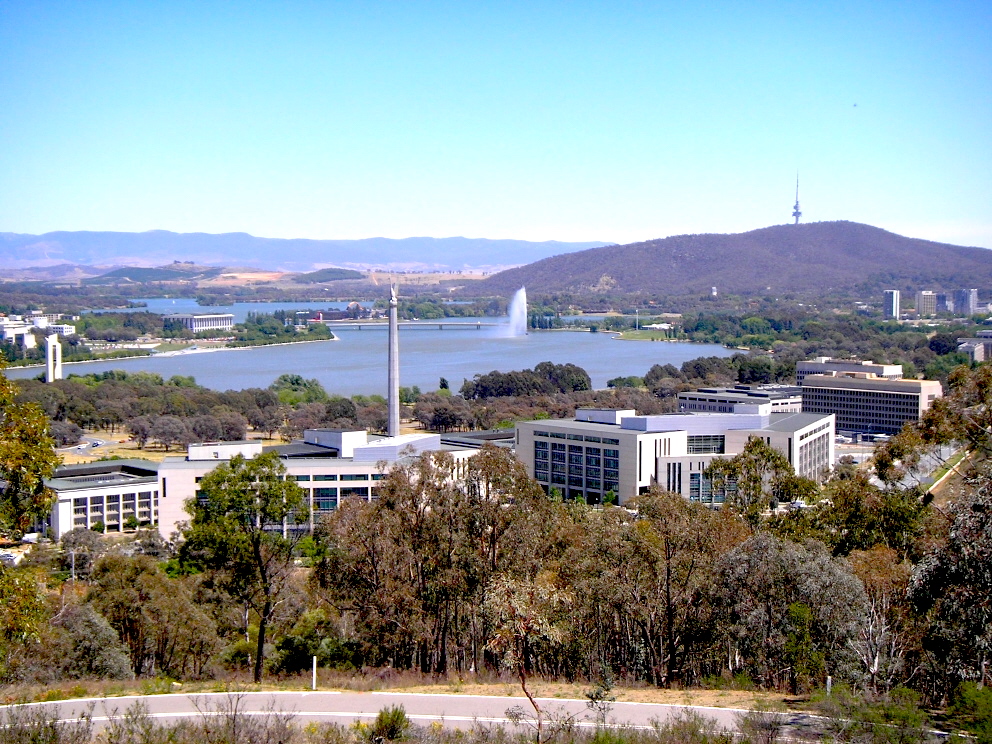





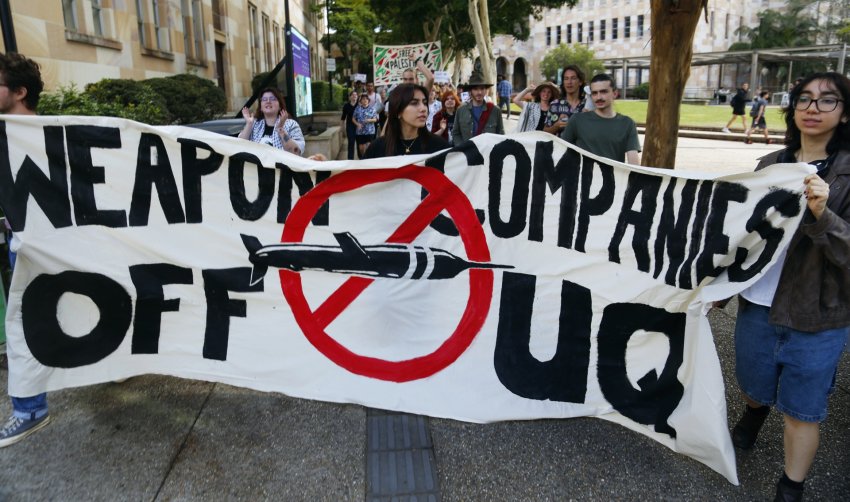

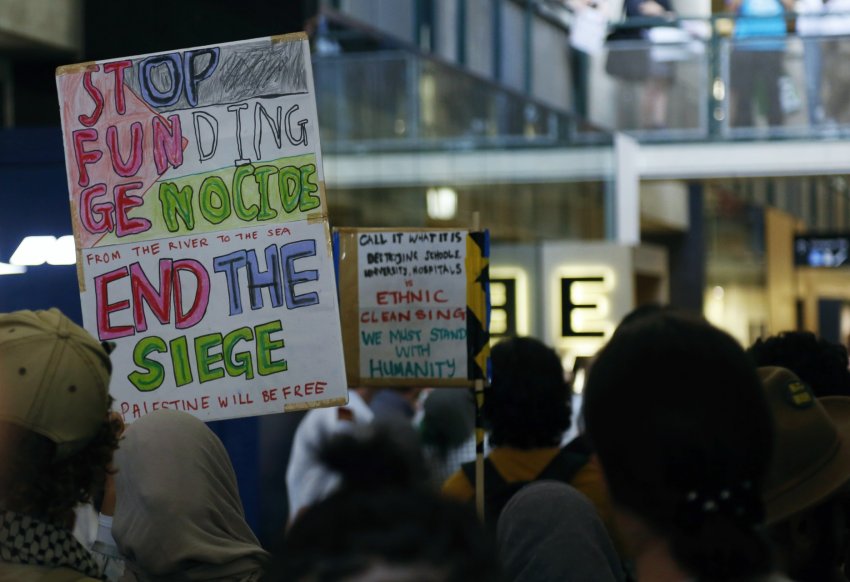
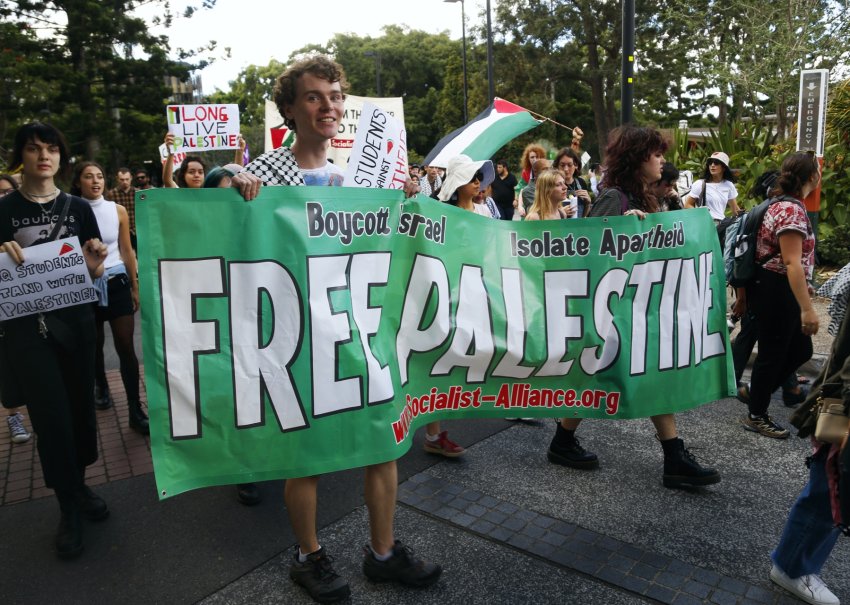
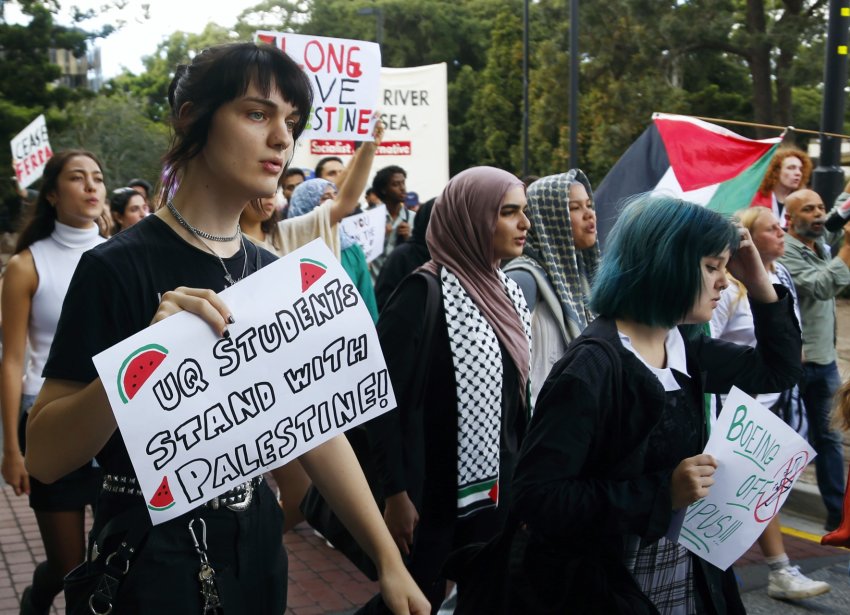
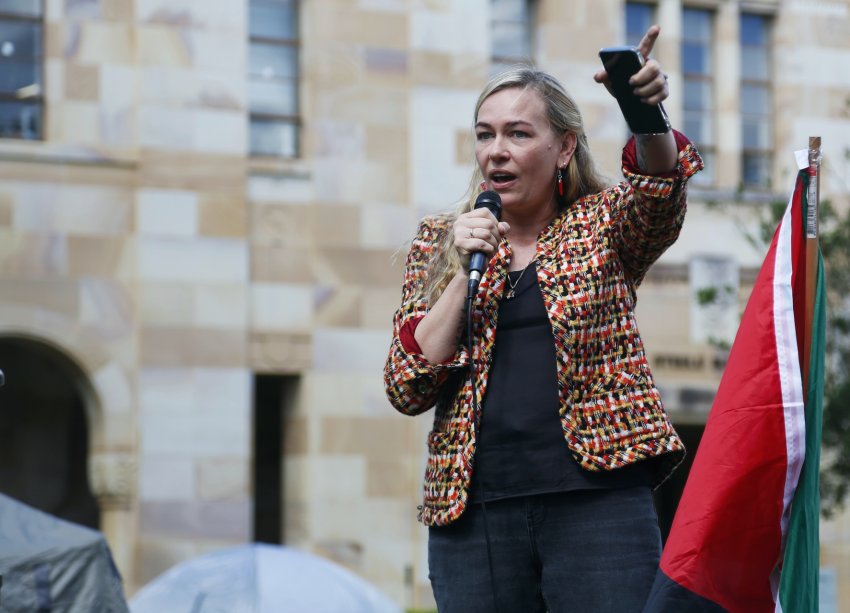
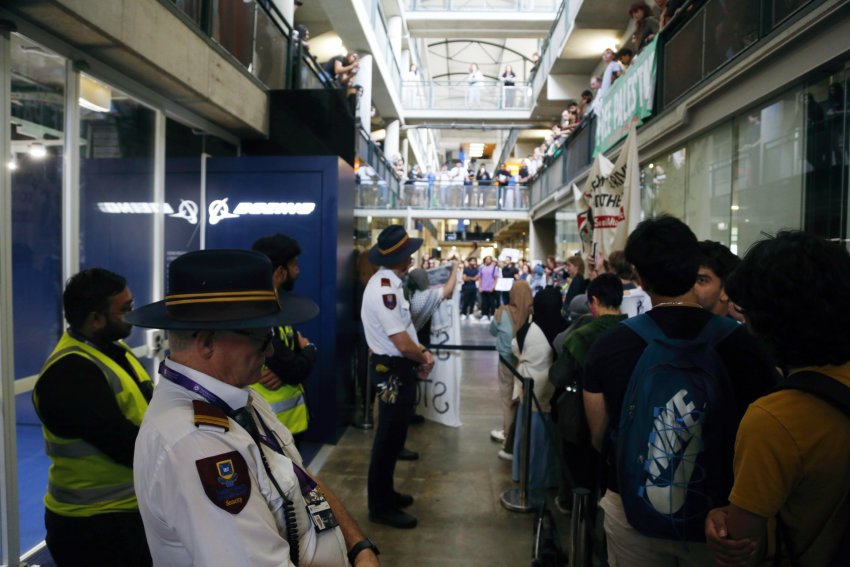
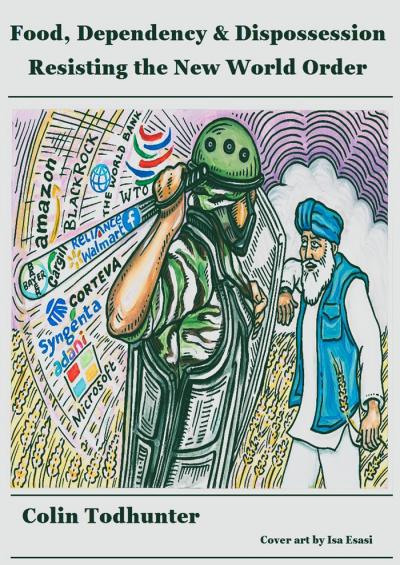 Read Colin Todhunter’s e-Book entitled
Read Colin Todhunter’s e-Book entitled
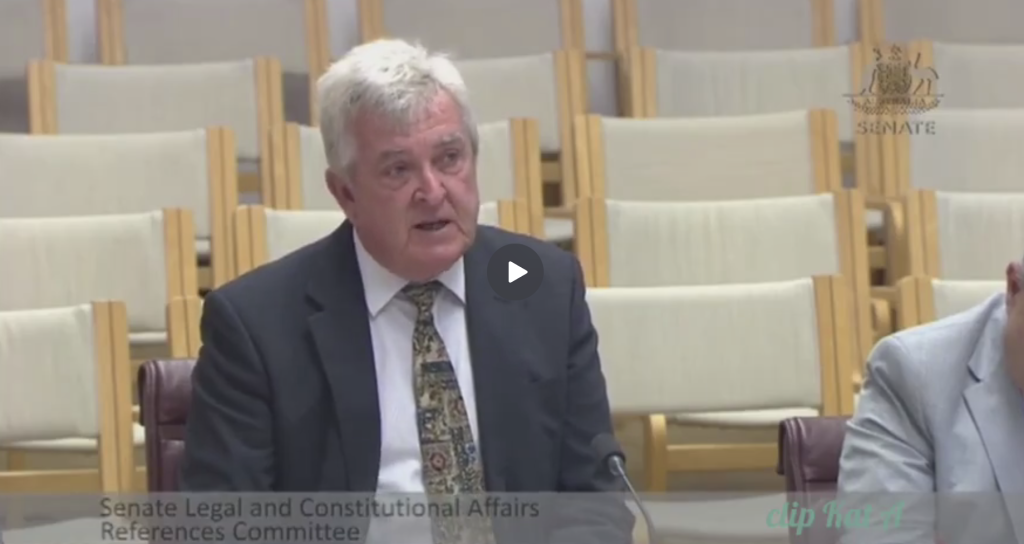
 The Worldwide Corona Crisis, Global Coup d’Etat Against Humanity
The Worldwide Corona Crisis, Global Coup d’Etat Against Humanity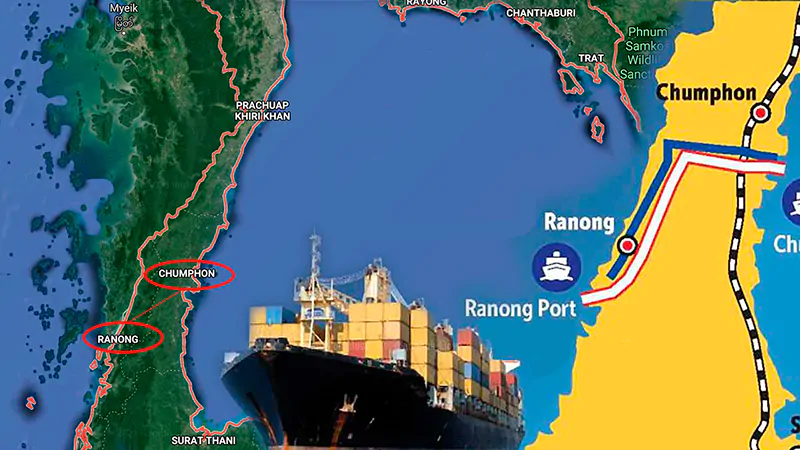

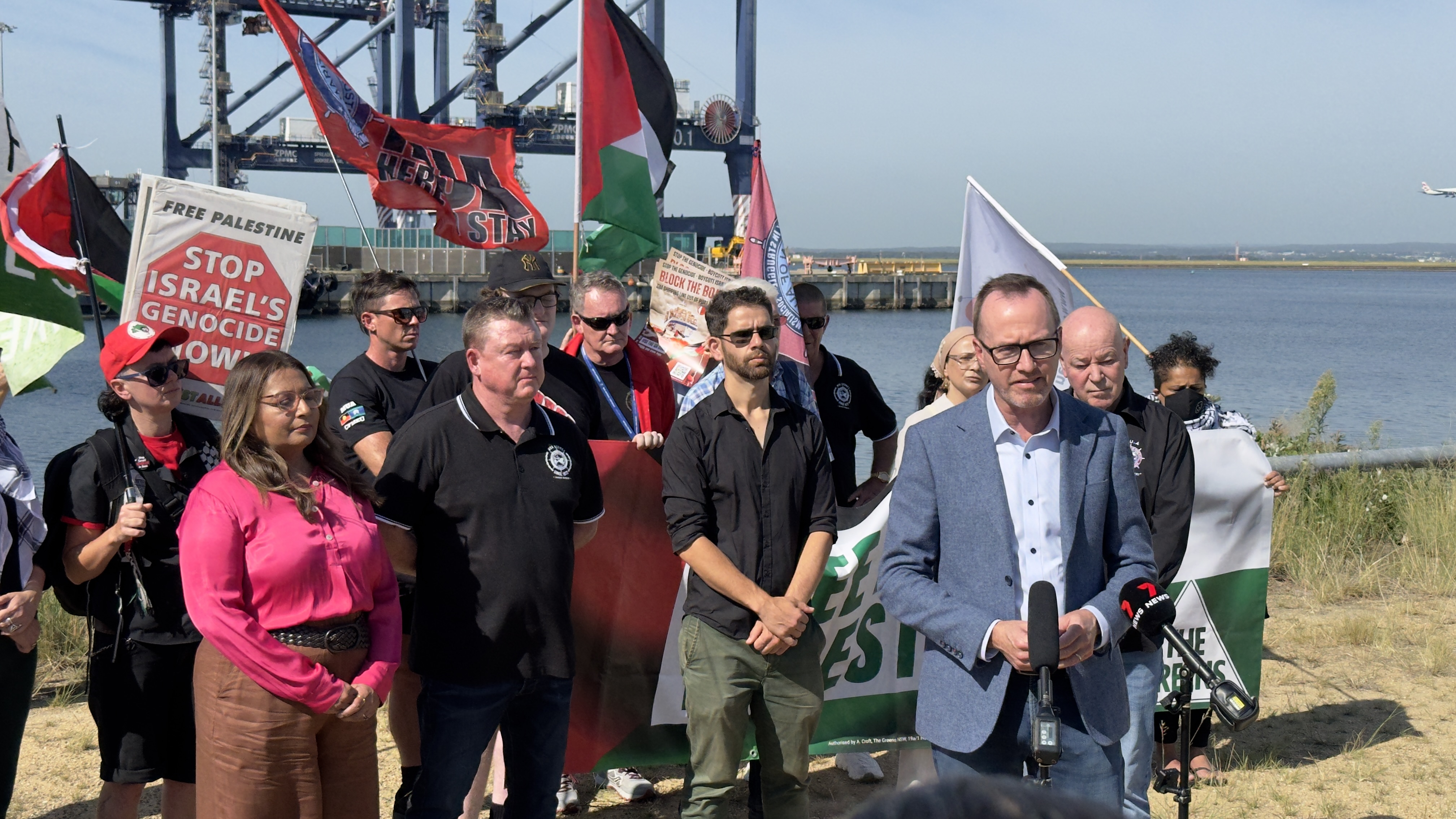







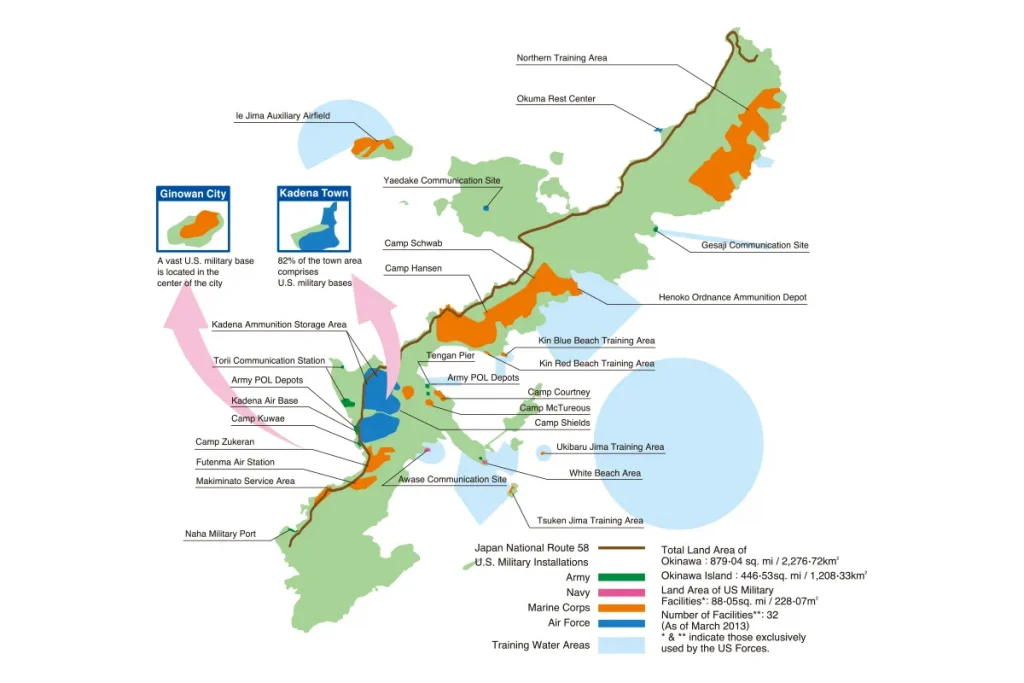





.jpg)





